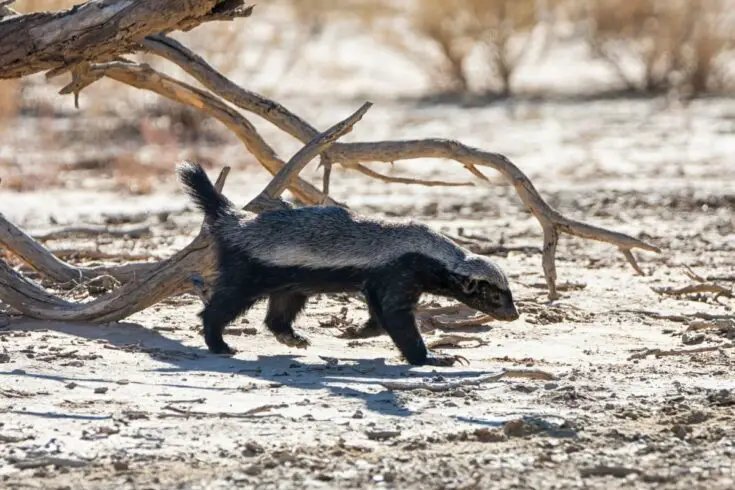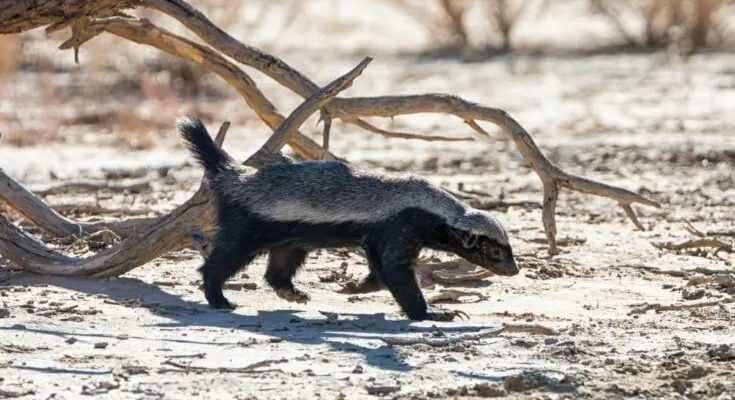
Honey badgers are primarily found in Africa, but their range extends beyond just one continent. Think of it like a big puzzle; together, these pieces make up a picture of diverse landscapes where honey badgers live. Their unique adaptability allows them to thrive in various environments. From savannas to forests, and even deserts, these little warriors can survive in some of the most challenging places on Earth. So, grab your favorite drink, and let’s explore the wild world of honey badgers and discover where they make their homes.
Honey Badger Habitat: An Overview
When we talk about honey badger habitats, it’s essential to understand that these animals have a knack for survival in different environments. They usually prefer areas that are dry and warm, but they’re surprisingly versatile. Savannas, grasslands, and even forests are common places where you’ll find these creatures. But here’s the interesting part: honey badgers can also live in more arid regions, like scrublands or even parts of semi-deserts. It’s just a testament to their adaptability.
These little beings are not very picky when it comes to their homes. You could say they have a “home is where the heart is” approach to their habitats. They tend to dig burrows or occupy existing ones made by other animals. So if you think about it, they’re like tiny tenants in nature’s rental market! This behavior allows them to create cozy spaces to rest and hide from predators.
In summary, honey badgers are typically found in:
- Savannas
- Grasslands
- Forests
- Scrublands
- Semi-deserts
Their ability to thrive across these different terrains keeps them safe and allows for a rich, varied diet.
Geographical Distribution
Now, let’s zoom out and look at the geographical distribution of honey badgers. You’ll primarily find them in sub-Saharan Africa, which is a vast region that provides the perfect conditions for these remarkable animals. Countries like South Africa, Namibia, Kenya, and even Tanzania are known hotspots for honey badger sightings. They thrive in these regions largely because of the availability of food sources like insects, small mammals, and, yes, that sweet honey they’re named after!
But it’s not just Africa. Honey badgers also have a presence in Western Asia and parts of India. So, if you ever thought of them as only an African animal, it’s time to reconsider! Their adaptability has allowed them to carve out niches in various ecosystems, including the scrub forests of India.
It’s fascinating how they find their way into different habitats. They often adjust their diet and behavior according to the local environment, making them one of nature’s true survivors. Whether they are digging in the dirt in Africa or roaming the forests in India, honey badgers have a knack for making any place their own.
The Role of Climate in Honey Badger Geography
Climate plays a significant role in determining where honey badgers can thrive. These animals are typically found in areas where the climate supports their lifestyle. They prefer regions that are warm and dry, which is why they’re often spotted in savannas and arid areas. Here’s the thing: honey badgers can’t handle extreme cold very well. So, you won’t find them in chilly climates, where finding food would be a challenge.
What’s intriguing is how they adapt to different weather patterns. For example, in regions that experience a wet season, honey badgers will increase their activity during those months when food is abundant. They’ve got this instinctive ability to sync with their environment, ensuring they make the most of what’s available.
In addition to warmth, honey badgers need access to sources of water. While they can go without drinking for extended periods, reliable water sources are crucial. This connection to climate and water availability often dictates their presence in a specific region.
Food Availability and Honey Badger Habitat
You might be wondering how food availability impacts where honey badgers live. Well, since they are opportunistic feeders, their clever foraging habits dictate their habitats. Imagine them as tiny treasure hunters. They go after everything from rodents and reptiles to insects and, of course, honey.
If you think of their diet as a buffet, honey badgers will choose their habitats based on what’s on the menu! The regions they inhabit must provide a mix of these food sources for them to thrive. In areas with ample prey, such as rodents or insects, honey badgers can easily find meals and establish their territory.
Moreover, they’re known for their audacious behavior, which often leads them to raid beehives. This love for honey is what gives them their name, and it requires them to live near flowering plants that produce nectar. So, their food choices help shape the areas they inhabit, connecting their lifestyle directly to the local ecosystem.
Conservation Status and Habitat Protection
Now, let’s touch on a significant aspect of honey badgers: conservation. Despite their reputation as tough little fighters, honey badgers face various threats. Habitat loss due to agriculture, urbanization, and deforestation is a significant concern. When their natural homes shrink, it not only affects the honey badgers but also the entire ecosystem they’re a part of.
Conservation efforts are essential to protect these unique animals and their habitats. Organizations focus on preserving the environments where honey badgers thrive, ensuring they have enough space to roam freely and continue their role in the ecosystem. It’s like standing up for a tiny, yet mighty, warrior in the wild.
In addition, educating local communities about the importance of honey badgers helps reduce conflict between humans and wildlife. Many people don’t realize how vital these creatures are for maintaining balance in their ecosystems. By creating awareness, we can foster a spirit of coexistence that benefits both the honey badgers and the people living nearby.
How Human Activity Affects Honey Badger Distribution
Human activity inevitably impacts where honey badgers live. Urbanization and agricultural expansion challenge their habitats, creating a ripple effect on their population and behavior. Imagine a honey badger trying to find food in a neighborhood or on a farm; it’s not an easy task!
When humans encroach on their territories, honey badgers may have to adapt to new conditions, which can be stressful. They might end up scavenging in less natural environments, changing their feeding patterns and behavior. In some cases, they may face dangers like vehicles or domestic pets, leading to increased mortality rates.
Furthermore, in regions where honey badgers are hunted or trapped due to misconceptions about their behavior or ecological role, their numbers can dwindle. Challenging these myths through education can significantly help their conservation and distribution. It’s all about understanding their place in our ecosystems and ensuring they have a safe space to thrive.
In summary, honey badgers are a remarkable species with a wide range of habitats and a fascinating lifestyle. Their distribution spans across Africa and parts of Asia, showcasing their adaptability to various climates and environments. While they’re tough little fighters, they face challenges from habitat loss and human activity.
It’s essential to recognize the importance of conservation efforts to help protect these unique animals and the ecosystems they inhabit. By understanding where honey badgers live and how human actions affect them, we can take steps to ensure they continue to thrive. So, the next time you think of honey badgers, remember the wild, resilient creatures that defy their small stature and navigate through diverse landscapes. They truly are an inspiration in the animal kingdom.

